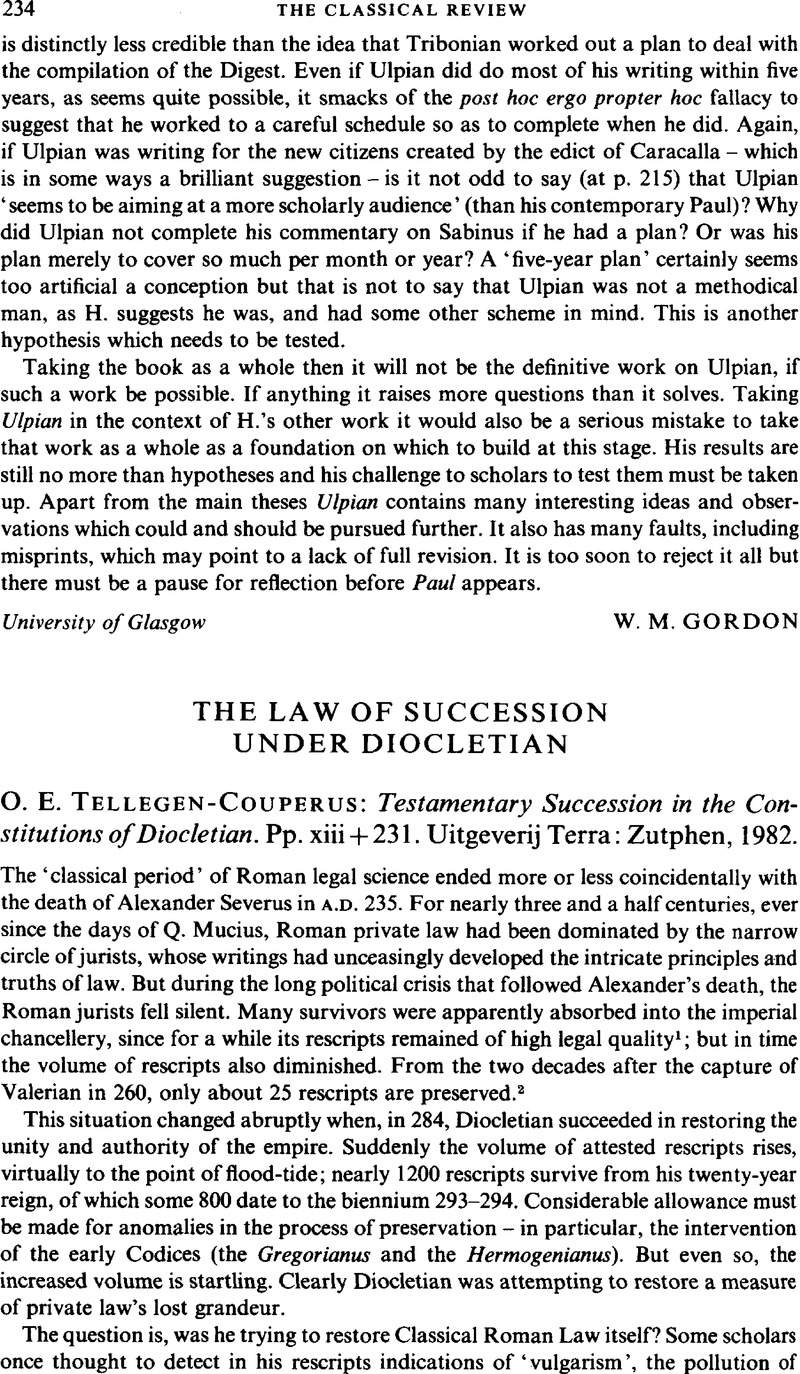No CrossRef data available.
Published online by Cambridge University Press: 16 February 2009

1 See Wieacker, F., RH 49 (1971), 201–223Google Scholar; Watson, A., TR 41 (1973), 19–34Google Scholar, and Tulane Law Review 48 (1974), 1122–1128Google Scholar; Schnebelt, G., Reskripte der Soldatenkaiser (1974), esp. 193–201.Google Scholar
2 For statistics on volume of rescripts, see Honoré, T., Emperors and Lawyers (1981), 140–143.Google Scholar
3 E.g., Taubenschlag, R., Opera Minora, I (1959), 2–177Google Scholar; the essay was first published in 1923.
4 See Kaser, M., Das Römische Privatrecht, II (1975), 18–19Google Scholar, with further bibliography, esp. Amelotti, M., Per l'Interpretatione della Legislazione Privatistica di Diocleziano (1960).Google Scholar
5 Compare T. Honore, (cited note 2) 135–8, and cf. 104: ‘the office a libellis… remained, even more strikingly than before, the guardian of the laws and mores of the Roman people, the custodian of true legal doctrine and discipline’. See also MacMullen, R., Roman Government's Response to Crisis (1976), 94–95.Google Scholar